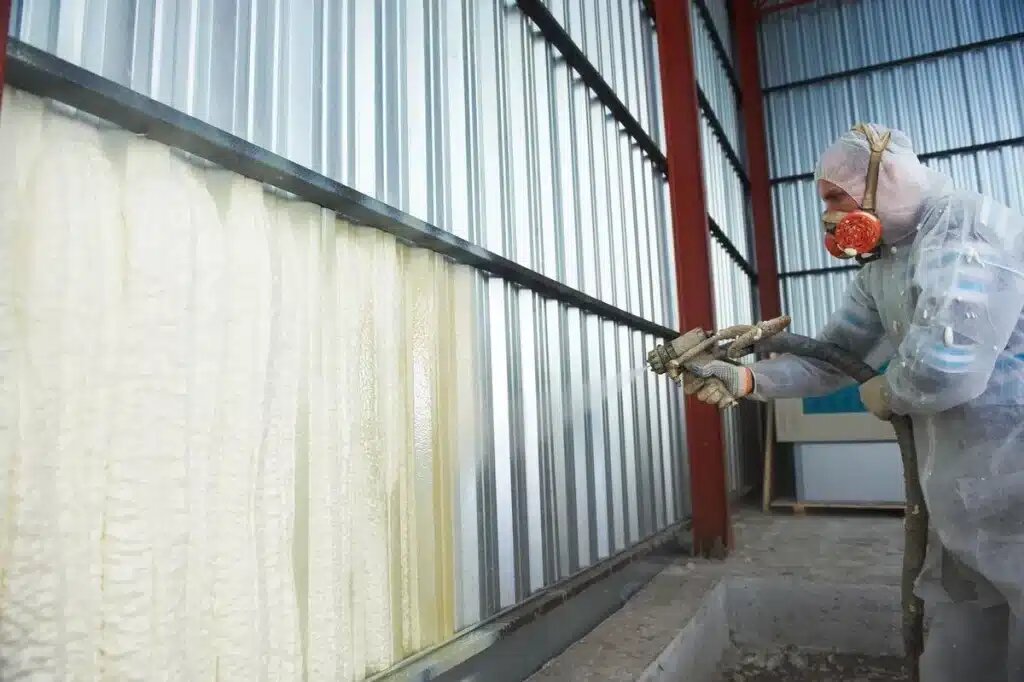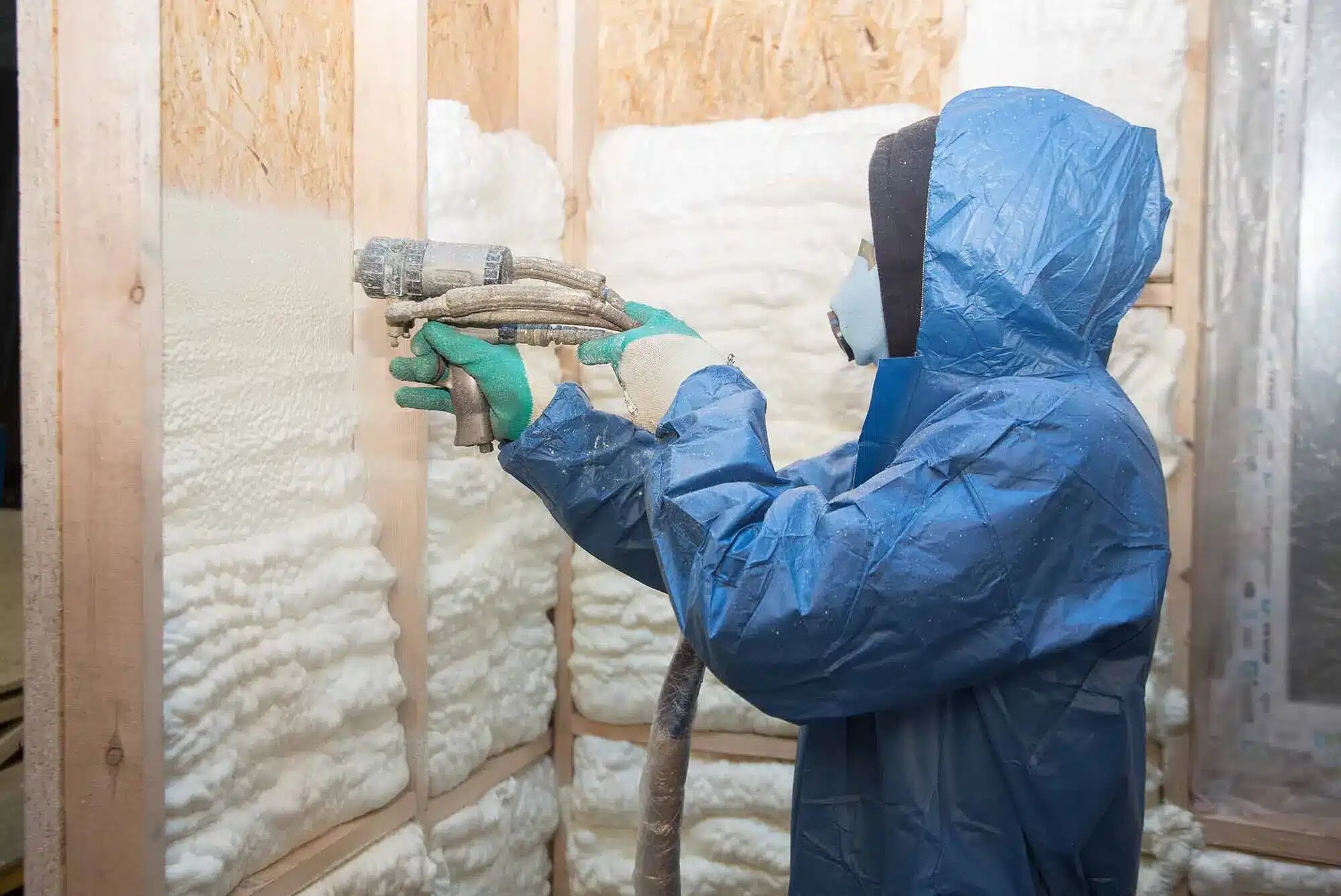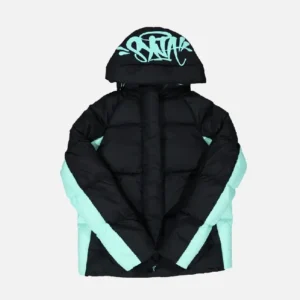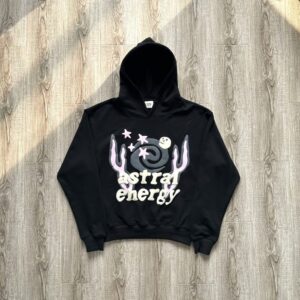Why Spray Foam Is the Smart Choice for Commercial Properties
Spray foam insulation has become a preferred choice for commercial buildings, not only because of its high energy efficiency but also due to its ability to meet the complex performance needs of modern structures. The core reasons are simple: it seals air leaks, regulates indoor temperature, and strengthens the building envelope. For large-scale properties—where HVAC usage, moisture control, and structural integrity are critical—spray foam outperforms other insulation types.
Unlike traditional materials that rely on thickness alone to perform, spray foam delivers better thermal resistance in thinner applications. This is especially valuable in commercial buildings where space, mechanical efficiency, and long-term performance are top priorities. Whether it’s a warehouse, retail store, office building, or industrial facility, spray foam helps reduce energy costs, extends HVAC equipment life, and provides a consistent indoor climate.
This article explores all critical aspects of spray foam insulation in commercial properties, with a focus on real-world value, clear comparisons, and practical decision-making insights.
Performance Comparison Against Other Materials
To understand the real value spray foam brings to commercial spaces, it helps to compare it side by side with conventional insulation types.
| Feature | Spray Foam | Fiberglass | Cellulose | Rigid Foam Board |
|---|---|---|---|---|
| Thermal Resistance (R-Value/inch) | 6.0–7.0 (Closed-cell) | 2.9–3.8 | 3.2–3.8 | 4.5–5.0 |
| Air Sealing Capability | Excellent | Poor | Fair | Fair |
| Moisture Resistance | High | Low | Medium | High |
| Durability | 30–50 years | 10–25 years | 20–30 years | 20–30 years |
| Vapor Barrier | Yes (Closed-cell) | No | Limited | Yes |
| Sound Control | Very Good (Open-cell) | Moderate | Moderate | Low |
| Installation Complexity | Requires professional application | Easy | Moderate | Easy |
Spray foam uniquely serves dual functions: insulation and air sealing. This eliminates the need for separate air or vapor barriers, reducing material layers and complexity. This is especially helpful in buildings with unusual shapes, open ceilings, or complex MEP (mechanical, electrical, plumbing) designs.
Energy Efficiency and HVAC Performance
One of the most compelling reasons to choose spray foam for commercial buildings is the long-term energy efficiency it provides. Buildings insulated with spray foam require significantly less energy to heat and cool. That’s because closed-cell foam stops air leakage, reducing thermal drift and ensuring consistent R-value over time.
Energy codes such as the IECC (International Energy Conservation Code) and ASHRAE 90.1 are increasingly demanding higher insulation standards. Spray foam helps meet and exceed those benchmarks without requiring thick layers or added systems.
| Metric | Closed-Cell Spray Foam | Open-Cell Spray Foam |
|---|---|---|
| R-Value per Inch | 6.0 – 7.0 | 3.5 – 3.8 |
| Perm Rating (moisture transmission) | <1.0 (low permeability) | >10.0 (high permeability) |
| Compressive Strength | 25–30 psi | ~5 psi |
| Air Barrier Capability | Excellent | Excellent |
| Sound Absorption | Moderate | Excellent |
Closed-cell foam also acts as a vapor barrier, helping prevent mold growth and water damage. In commercial kitchens, laboratories, or buildings in humid climates, this moisture resistance protects the structure long term.
Bonus Tip: Using spray foam on roof decks and exterior walls can reduce HVAC load by up to 25–30%, making systems last longer and operate more efficiently.
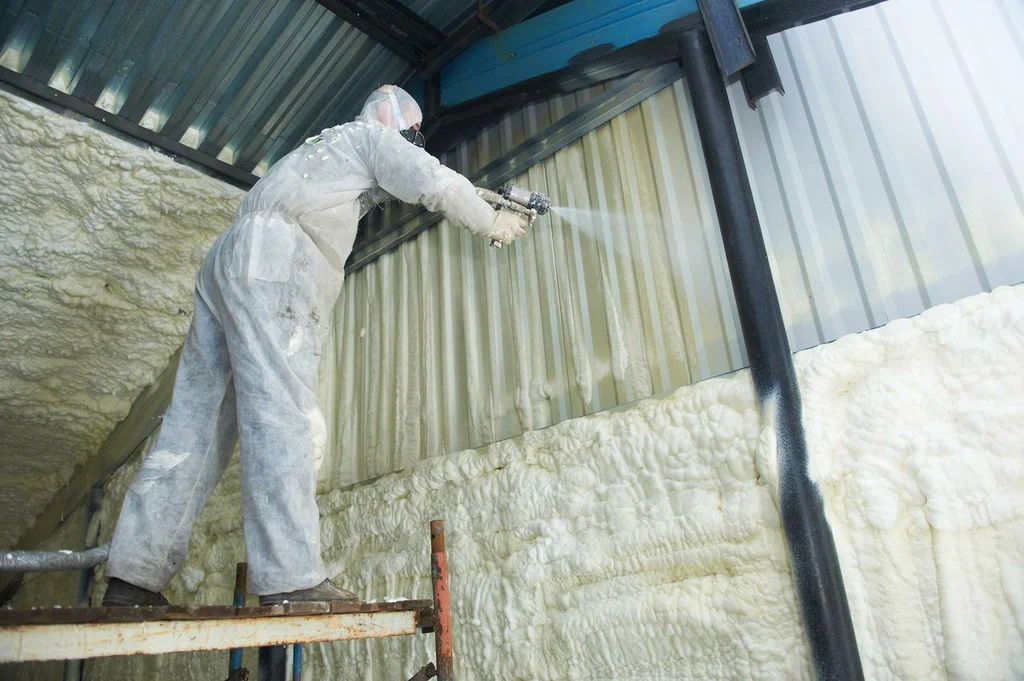
Building Use Cases and Practical Benefits
Spray foam’s performance benefits apply to a wide range of commercial property types, including:
- Warehouses and logistics hubs, where temperature regulation and durability are critical
- Retail stores that require comfort for both customers and employees year-round
- Offices, where indoor air quality and acoustic control are top priorities
- Educational and municipal buildings that need to meet energy standards on tight budgets
In buildings with high ceilings or metal construction, closed-cell spray foam also helps stabilize indoor conditions by sealing thermal bridges—points where heat or cold can bypass insulation entirely. This makes the building more comfortable and easier to manage.
Another key factor: spray foam doesn’t settle or sag over time. Traditional batts and blown insulation degrade and allow gaps to form, but foam stays in place, performing consistently throughout its service life.
Considerations Before You Choose Spray Foam
Before committing to spray foam insulation, it’s important to look beyond just the R-value or price per square foot. Real-world success depends on matching the insulation type to the building’s climate zone, usage patterns, and long-term needs.
Climate Relevance In colder regions, higher R-value per inch means better performance with thinner layers. In hot, humid zones, the moisture barrier properties of closed-cell foam are essential. Spray foam reduces condensation risks in both heating and cooling environments.
Design Flexibility Foam easily conforms to irregular surfaces, curved roofs, and mechanical spaces, which is especially useful in retrofits or adaptive reuse projects. Where rigid panels or batts leave gaps, spray foam fills them entirely.
Budget Evaluation While spray foam has a higher upfront cost, its lifecycle savings are substantial. According to energy data, commercial buildings can reduce energy bills by 20–40% when spray foam is combined with efficient HVAC systems and smart building controls. Most buildings see ROI within 4 years, especially when energy rebates or tax incentives apply.
Compliance and Green Building Goals Spray foam supports compliance with LEED, WELL, and Green Globes standards, especially for airtightness, thermal comfort, and moisture control. Many building codes now require blower door tests for commercial properties—spray foam helps meet these standards without additional air barrier systems.
Application and Technical Considerations
Installing spray foam requires certified professionals using high-pressure equipment. They must follow safety protocols and product specs for thickness, expansion rates, and curing time. The job site must be properly ventilated, and in occupied buildings, scheduling work outside of business hours is usually recommended.
| Factor | Description |
|---|---|
| Application Method | Two-part spray system applied directly to substrate |
| Substrate Requirements | Clean, dry, stable (e.g., concrete, metal, wood, drywall) |
| Cure Time | 24 hours before occupancy |
| Thermal Bridging Elimination | Excellent due to seamless coverage |
| Fire Safety Requirements | Ignition barrier or thermal barrier often required for code compliance |
Using spray foam behind walls, under roofing membranes, and in mechanical rooms can solve multiple problems in one step—insulation, air sealing, and water resistance.
Common Questions
Why is spray foam more effective than fiberglass in commercial settings?
Because spray foam creates an airtight seal, while fiberglass batts allow airflow, especially around electrical and mechanical penetrations. Spray foam delivers consistent performance without relying on compression or perfect installation conditions.
Can spray foam be added to existing commercial buildings?
Yes, particularly in attics, crawl spaces, or behind drop ceilings. Professionals can retrofit spray foam into wall cavities and ceilings without tearing down walls in many cases.
What’s the difference between open-cell and closed-cell foam?
Open-cell foam is lighter, more flexible, and better at sound absorption. Closed-cell foam is denser, water-resistant, and provides structural support. For commercial spaces, closed-cell is typically preferred due to its strength and vapor barrier properties.
Does spray foam pose any health risks?
Once cured, spray foam is inert and safe. During application, workers wear protective equipment and ventilate the space properly. After curing (usually 24 hours), the space is safe for re-entry.
How does spray foam affect indoor comfort?
Spray foam evens out temperature differences across rooms and floors, reducing hot and cold spots. It also lowers humidity indoors by preventing outside air infiltration.
Frequently Asked Questions
Q1: Is spray foam cost-effective for large buildings? Yes. Although the initial expense is higher, the energy savings in large buildings add up fast. Reduced maintenance and lower HVAC costs also contribute to long-term value.
Q2: Does spray foam help with sound control in offices? Open-cell spray foam performs well for sound control between rooms or floors. It’s effective in shared spaces, call centers, and buildings where acoustic comfort matters.
Q3: Will it work under flat commercial roofs? Yes. Closed-cell spray foam is often used beneath membrane roof systems for both insulation and waterproofing. It adds rigidity and helps prevent leaks.
Q4: Can spray foam contribute to mold prevention? Yes. By sealing out moisture and stopping condensation, closed-cell foam limits conditions where mold would typically grow.
Q5: How long does spray foam insulation last? Most spray foam systems last 30 to 50 years, depending on conditions. It won’t settle, degrade, or lose its R-value over time when installed correctly.
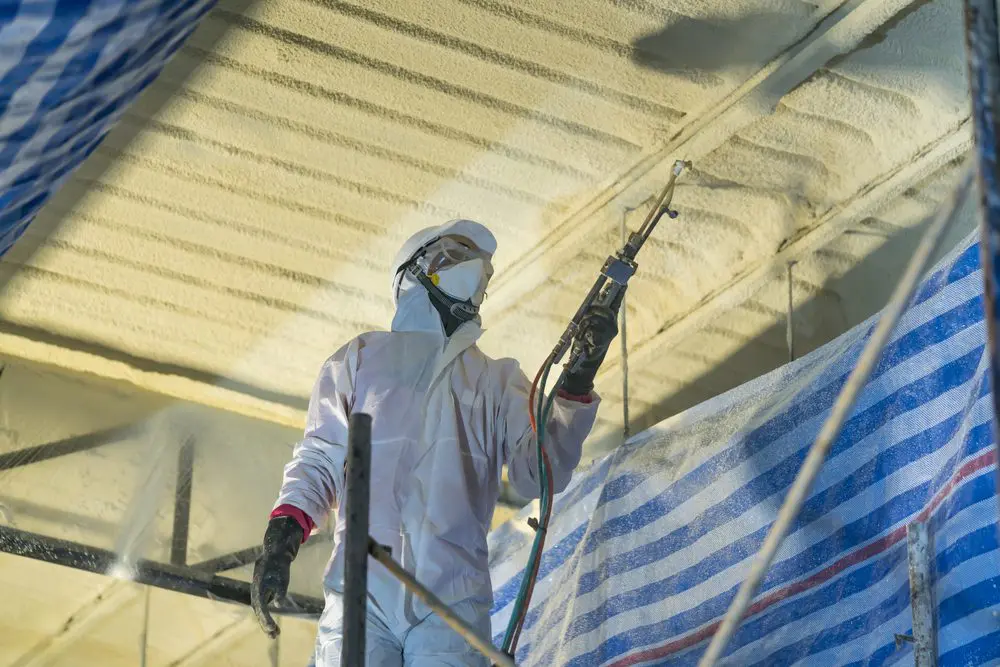
Final Thoughts
Choosing insulation for a commercial property goes far beyond cost per square foot. Spray foam insulation provides benefits that other materials can’t match—air sealing, moisture resistance, long-lasting R-value, and compatibility with modern building codes. It adapts well to challenging spaces, strengthens walls and roofs, and supports long-term energy and operational goals.
Before moving forward, assess your building’s layout, energy performance, and long-term plans. For most commercial projects, spray foam stands out as a smart investment that pays dividends in comfort, safety, and efficiency.
Reviewer: Maria Lopez reviewed the article and brought 12 years of insulation industry experience to improve the guidance. Practical tips were added, and the content was made clearer and more useful for contractors working in the field every day.
